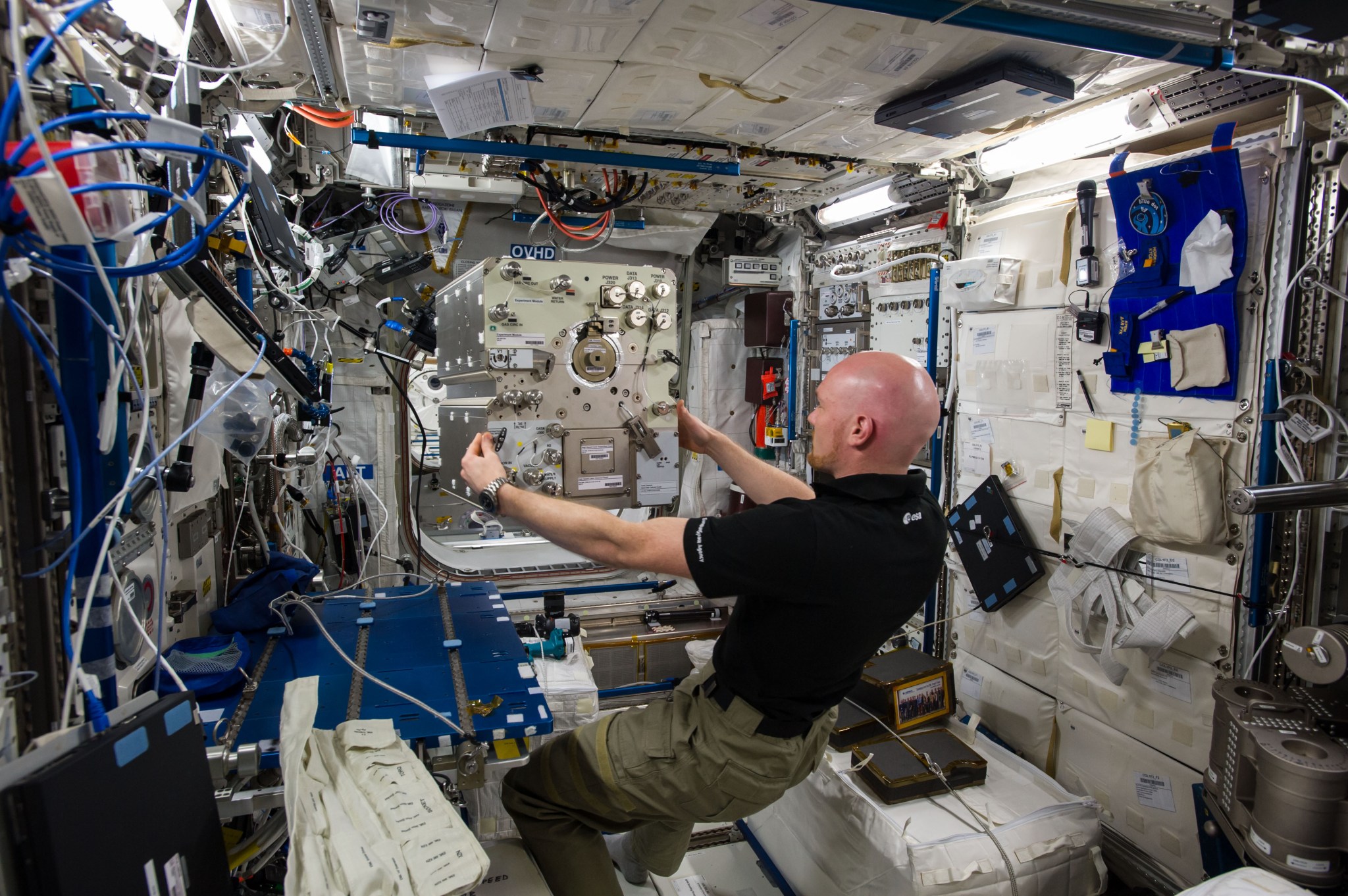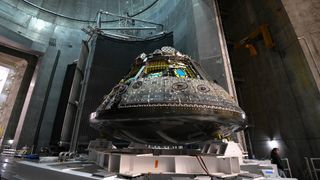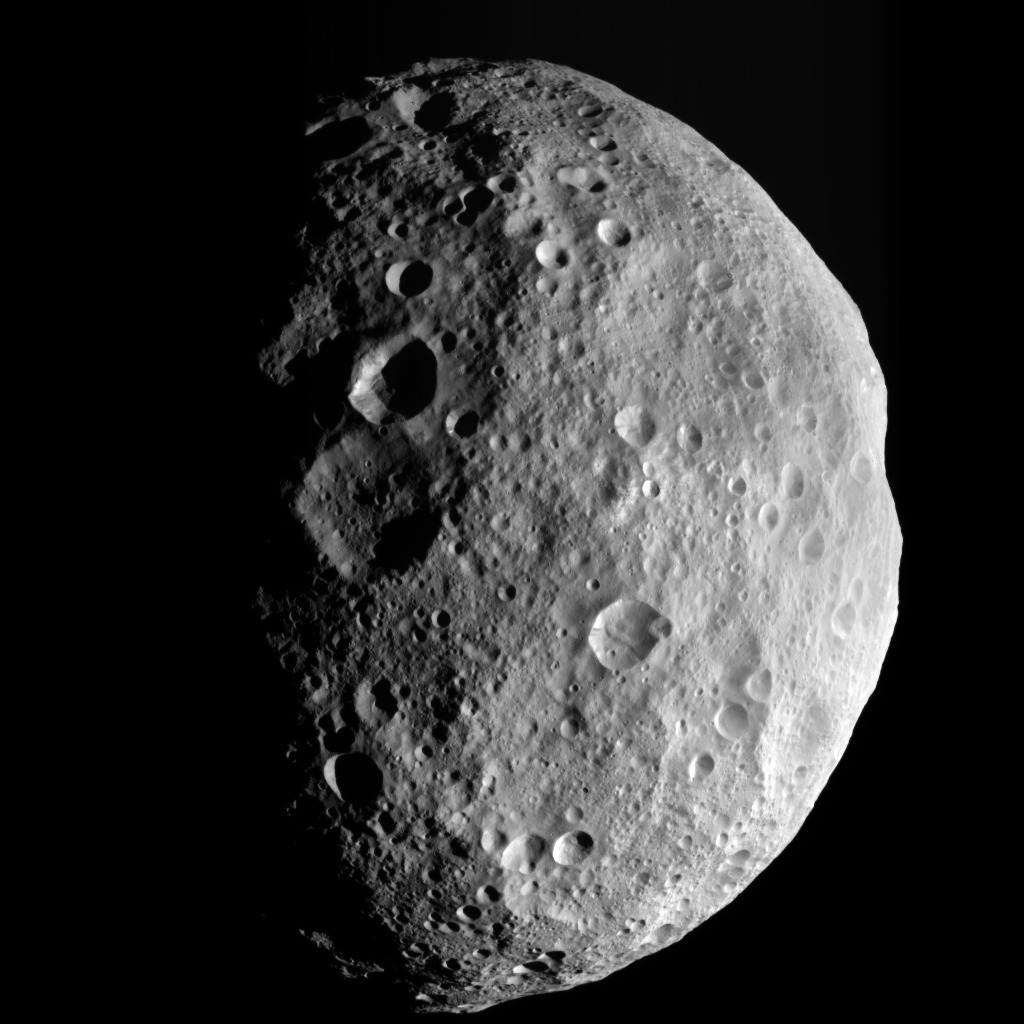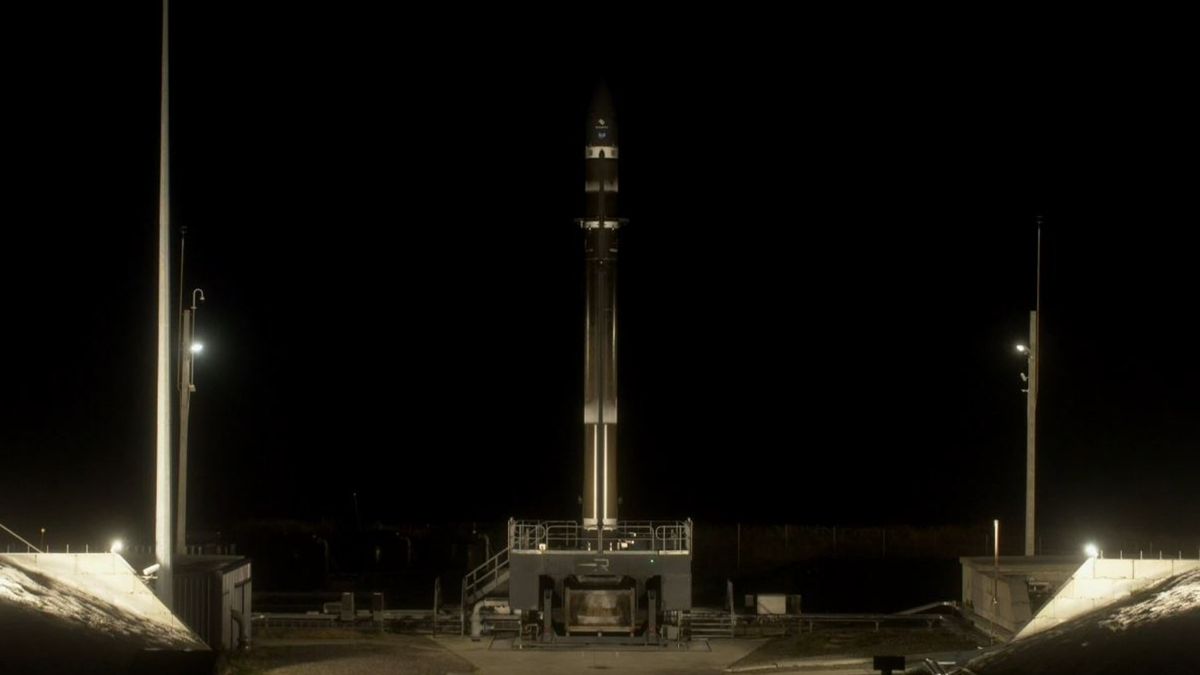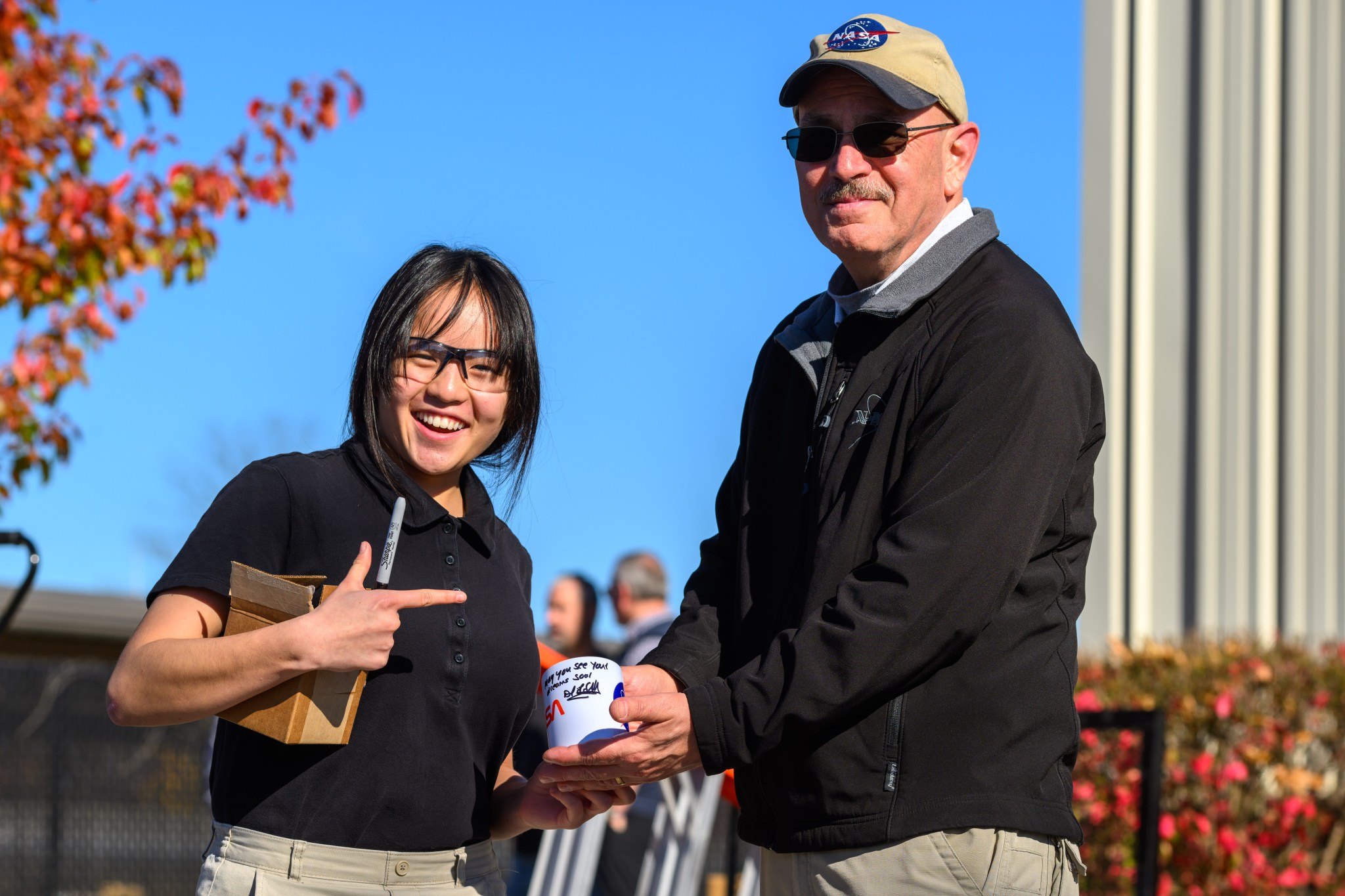During the morning of March 20, 2015, a total solar eclipse was visible from parts of Europe, and a partial solar eclipse from northern Africa and northern Asia. NASA’s Terra satellite passed over the Arctic Ocean on March 20 at 10:45 UTC (6:45 a.m. EDT) and captured the eclipse’s shadow over the clouds in the Arctic Ocean.
Read MoreMonth: December 2024
Station Science Top News: Dec. 20, 2024
A method for evaluating thermophysical properties of metal alloys Simulation of the solidification of metal alloys, a key step in certain industrial processes, requires reliable data on their thermophysical properties such as surface tension and viscosity. Researchers propose comparing predictive models with experimental outcomes as a method to assess these data. Scientists use data on surface tension and viscosity of titanium-based alloys in industrial processes such as casting and crystal growth. Non-Equilibrium Solidification, Modelling for Microstructure Engineering of Industrial Alloys, an ESA (European Space Agency) investigation, examined the microstructure and…
Read More2024: NASA Armstrong Prepares for Future Innovative Research Efforts
4 min read Preparations for Next Moonwalk Simulations Underway (and Underwater) NASA/Quincy Eggert NASA’s Armstrong Flight Research Center in Edwards, California, is preparing today for tomorrow’s mission. Supersonic flight, next generation aircraft, advanced air mobility, climate changes, human exploration of space, and the next innovation are just some of the topics our researchers, engineers, and mission support teams focused on in 2024. NASA Armstrong began 2024 with the public debut of the X-59 quiet supersonic research aircraft. Through the unique design of the X-59, NASA aims to reduce the sonic…
Read MoreWatch NASA’s Artemis Orion moon spacecraft blow its top during testing (video)
An uncrewed Orion spacecraft successfully traveled thousands of miles beyond the moon and back, demonstrating its ability to one day transport astronauts to lunar orbit — but there are a few more tests the spacecraft has to ace before setting out on that cosmic feat. The Artemis 1 mission that launched on Nov. 16, 2022 saw NASA’s Orion spacecraft fly 1.4 million miles around the moon and back — the farthest a spacecraft built for humans has ever gone — and then execute a planned splash down in the Pacific…
Read MoreNASA’s Webb Reveals Smallest Asteroids Yet Found in Main Asteroid Belt
Illustration of the main asteroid belt, orbiting the Sun between Mars and Jupiter NASA NASA’s powerful James Webb Space Telescope includes asteroids on its list of objects studied and secrets revealed. A team led by researchers at the Massachusetts Institute of Technology (MIT) in Cambridge repurposed Webb’s observations of a distant star to reveal a population of small asteroids — smaller than astronomers had ever detected orbiting the Sun in the main asteroid belt between Mars and Jupiter. The 138 new asteroids range from the size of a bus to the size of a…
Read MoreLab Work Digs Into Gullies Seen on Giant Asteroid Vesta by NASA’s Dawn
NASA’s Dawn spacecraft captured this image of Vesta as it left the giant asteroid’s orbit in 2012. The framing camera was looking down at the north pole, which is in the middle of the image. NASA/JPL-Caltech/UCLA/MPS/DLR/IDA Known as flow formations, these channels could be etched on bodies that would seem inhospitable to liquid because they are exposed to the extreme vacuum conditions of space. Pocked with craters, the surfaces of many celestial bodies in our solar system provide clear evidence of a 4.6-billion-year battering by meteoroids and other space debris.…
Read MoreNASA Mars probe spies dusty, retired Insight lander from orbit (photo)
NASA’s InSight lander continues to contribute valuable knowledge about Mars, even after its retirement. Photos captured in late October by NASA’s Mars Reconnaissance Orbiter (MRO) show InSight resting on the Martian surface. While no longer active, the rover is providing researchers new data on how dust accumulates and evolves over time in the region. “Even though we’re no longer hearing from InSight, it’s still teaching us about Mars,” science team member Ingrid Daubar of Brown University said in a Dec. 16 NASA statement. “By monitoring how much dust collects on…
Read MoreRocket Lab scrubs Strix radar satellite launch for Synspective over ‘sensor data’
The spaceflight company Rocket Lab called off a planned launch of half a dozen commercial satellites due to concerns over sensor readings on Friday (Dec. 20). Rocket Lab scrubbed what was to be its 16th Electron rocket flight of 2024 less than 20 minutes before planned liftoff at 10:03 a.m. EST (1503 GMT) from the company’s primary launch site on Mahia Peninsula in New Zealand. Fueling of the rocket had already begun at the time of the scrub. “We are standing down from today’s launch attempt for Synspective to take…
Read MoreNASA, Notre Dame Connect Students to Inspire STEM Careers
2 min read Preparations for Next Moonwalk Simulations Underway (and Underwater) Rebecca Anderson, a junior enrolled at the Portage School of Leaders High School in South Bend, Indiana, spent time with NASA Glenn Research Center’s Daniel Sutliff, an acoustic engineer, on the campus of the University of Notre Dame on Nov. 7, 2024. Students witnessed the operation of the Advanced Noise Control Fan owned by NASA and on loan to the university for STEM experiences. Credit: Matt Cashore/University of Notre Dame High school students in Indiana are contributing to NASA’s…
Read MoreGateway: Wired for Deep Space
A maze of cables and sensors snakes through a major piece of Gateway, humanity’s first space station around the Moon, during a key testing phase earlier this year to ensure the lunar-orbiting science lab can withstand the harsh conditions of deep space.
Read More